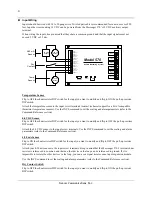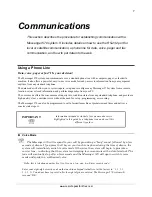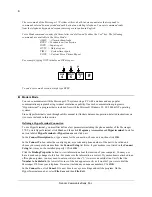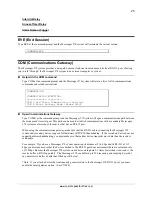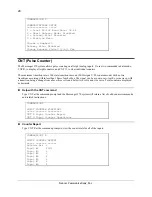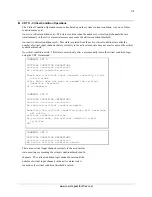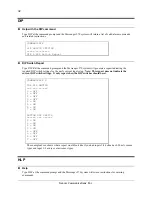
17
www.remotepossibilities.com
Automatic
There are three automatic modes of operation, differing only with respect to the time-of-day in which the
automatic control is active.
Automatic
The output will automatically turn ON or OFF as determined by the Output OFF and Output ON set-points on
its corresponding input. Use the INP S command to set or change the control set-points.
Automatic Day
Identical to AUTOMATIC, except that control only occurs during daytime hours. The output is off during
nighttime hours.
Use the INP S command to set or change the control set-points and the DAY S to set or change START OF
DAY and END OF DAY.
Automatic Night
Identical to AUTOMATIC, except that the output will be OFF during daytime hours.
Alarm
When using one of the alarm tracking modes to control an output, you must enter an alarm mask for that output.
The alarm mask indicates which input’s alarm conditions should be used to control the output. The alarm mask
is a two character hexadecimal number representing an eight bit binary mask. The least significant bit of the
mask correlates to input #1, the most significant bit of the mask correlates to input #8. If a bit in the mask is set
to 0, alarms on the correlating input will
not
control the output. Conversely, if a bit is set to 1, an alarm on the
correlating input will control the output.
As an example, if you want output #1 to be controlled by alarms on input channels 1 through 4, but ignore
alarms on channels 5 through 8, you would use
0F
(equivalent to binary 00001111) as the alarm mask.
Close on Present Alarms
The output will go on (close) when an alarm condition presently exists on any of the inputs designated by the
alarm mask. A present alarm is considered to be active when an input alarm set point is exceeded for longer
than the input’s response time.
Open on Present Alarms
The output will go off (open) when an alarm condition presently exists on any of the inputs designated by the
alarm mask. A present alarm is considered to be active when an input alarm set point is exceeded for longer
than the input’s response time.
Close on Unacknowledged Alarms
The output will go on (close) when an alarm condition exists on any of the inputs designated by the alarm
mask, and stay on even if the alarm condition goes away. It will turn off (open) when the alarm condition is
acknowledged.


